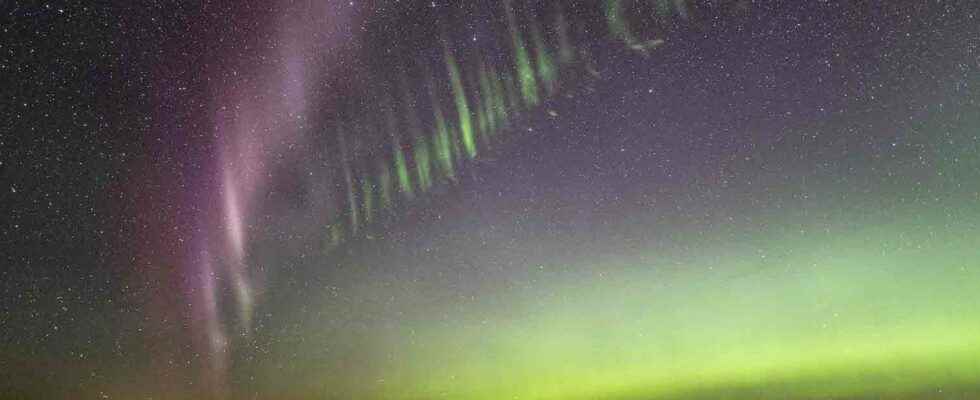First observed in 2015, the luminous phenomenon Steve looks just like a polar aurora, even if the physics behind it are not the same. On the night of August 7-8, as a solar storm hit the Earth, this strange luminous streak appeared again, this time in southern Canada!
You may also be interested
[EN VIDÉO] Aurora borealis and australia: how are they formed? Thanks to Adrien Mauduit, let yourself be carried away in the contemplation of these superb polar auroras which appear at high latitudes, drawing immense moving volutes, according to the solar wind.
The origin of this phenomenon is not yet known, although since its first documentation in 2017, it has been suspected. On the night of August 7-8, a strangest luminous celestial apparition was observed in southern Canada. She gate the name of steve phenomenonfor Strong Thermal Emission Velocity Enhancement. This recently known phenomenon occurs only when solar storms hit the Earth.
However, the solar winds brought by such storms contain different charged particles at high energy. They would therefore be at the origin of Steve. And it is these solar winds which are at the origin of the polar aurorawhose color corresponds to the elements of theatmosphere which are ionized during their interactions with charged particles.
A great showing of @STEVEPenomena last night, Aug 7-8, arcing across the sky, and showing his green fingers briefly for about 2 minutes. STEVE lasted about 40 minutes, appearing as the Kp5 aurora to the north subsided. This was 12:30 am MDT from southern Alberta. @TweetAurorapic.twitter.com/EtKF6udfFk
—Alan Dyer (@amazingskyguy) August 8, 2022
Steve appears in the subauroral zones
However, in Steve’s case, the physical differs: the latter always appears when solar stormsbut after the aurora at latitudes much lower than where they occur, called subauroral zones. “Steve lasted about 40 minutes, appearing as the auroras to the north quieted down”wrote photographer Alan Dyer, who captured the phenomenon.
Thus, its origin is elsewhere. It consists of a long purple streak accompanied – or not – by a kind of green palisade which disappears in a few minutes. The light purple as for it can last more than one hour. Scientists think Steve came from high-speed collisions speed between the charged particles in theionosphere. The result: gas hot ionized, called plasma. At least for the purple part. Green light, on the other hand, would result from turbulence in this plasma, which would locally ionize the atoms ofoxygen.
Scientists previously compared ground sightings with data from @esa‘s #Swarm mission to show that the Steve phenomena actually comprised a fast-moving stream of extremely hot atomic particles. They have now determined its altitude ranges. Details???? https://t.co/8UCMAJpKTwpic.twitter.com/XNTJgiJpin
—ESA EarthObservation (@ESA_EO) December 1, 2019
Interested in what you just read?
